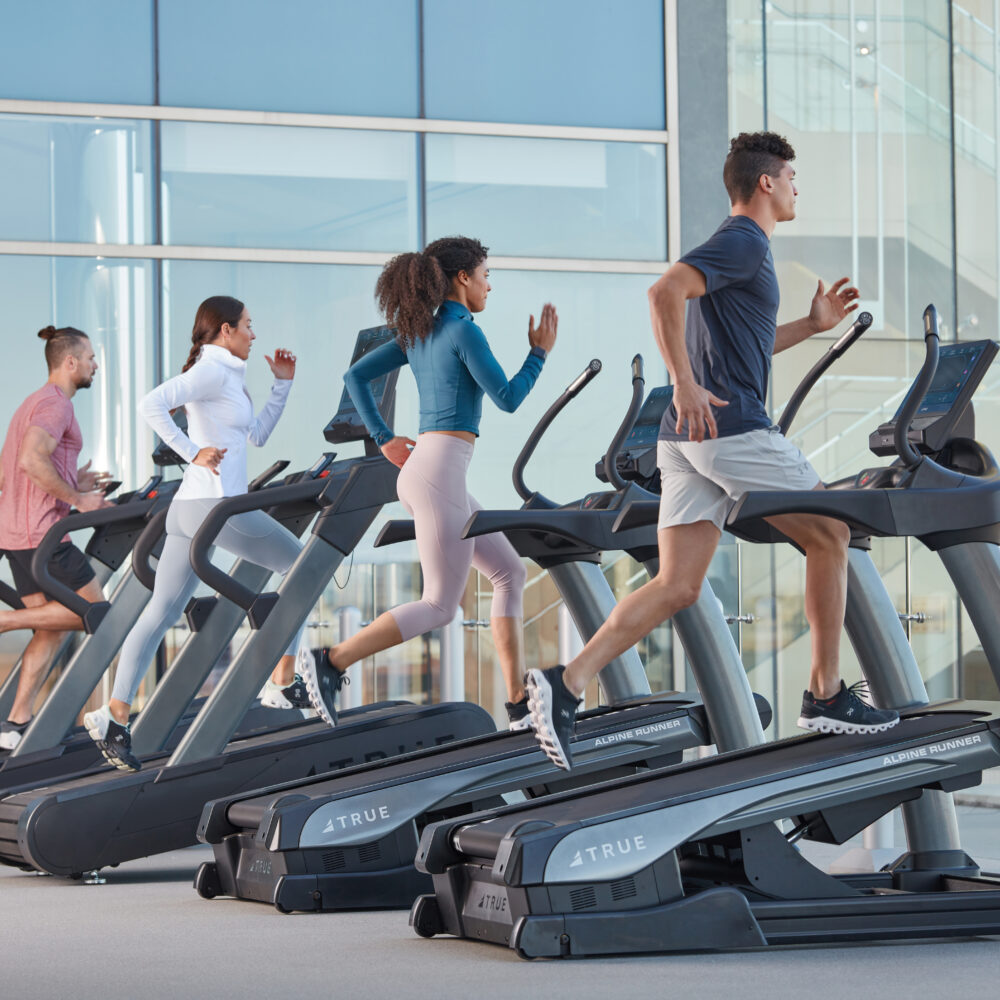I. Definition and Importance

It encompasses the physical attributes and capabilities that contribute to overall well-being and are associated with lower risks of chronic diseases. Understanding the definition, importance, and the role of health-related fitness in disease prevention is crucial for fostering a healthier lifestyle.
A. Defining Health-Related Fitness
It refers to the physiological attributes that enable the body to perform daily activities efficiently and reduce the risk of developing chronic diseases. It includes components such as cardiorespiratory endurance, muscular strength, flexibility, and body composition, all of which contribute to optimal health and overall well-being.
B. Significance for Overall Well-being
It plays a vital role in promoting overall well-being, encompassing physical, mental, and emotional aspects of health. It is not only about the ability to engage in physical activities but also about improving self-esteem, enhancing mental resilience, and fostering a sense of well-being and vitality.
C. The Role of Health-Related Fitness in Disease Prevention
Maintaining health-related fitness has a significant impact on disease prevention. Physical activity and fitness can help reduce the risk of various chronic conditions such as heart disease, diabetes, obesity, and hypertension. Additionally, it can positively influence mental health and cognitive function, reducing the likelihood of developing mental health disorders.
II. Components of Health-Related Fitness
The components of health-related fitness encompass different elements that contribute to overall physical well-being and functional abilities.
A. Cardiorespiratory Endurance
Cardiorespiratory endurance refers to the body’s ability to sustain prolonged physical activities that require the circulatory and respiratory systems to supply oxygen to the muscles efficiently. It is a crucial component of health-related fitness and is associated with improved heart health, increased energy levels, and reduced risks of cardiovascular diseases.
B. Muscular Strength and Endurance
Muscular strength and endurance are essential components of health-related fitness. It refers to the ability of a muscle or group of muscles to exert maximal force, while muscular endurance relates to the capacity to sustain repeated muscle contractions. These components are vital for maintaining functional independence, promoting bone health, and preventing injuries.
C. Flexibility and Body Composition
Flexibility denotes the ability of the body’s joints to move through their full range of motion, while body composition refers to the proportion of body fat and lean mass. Both factors are essential components of health-related fitness, contributing to improved posture, reduced risk of musculoskeletal injuries, and enhanced metabolic health.
III. Assessing Health-Related Fitness

Effective assessment of fitness is essential in understanding one’s current fitness level, setting realistic fitness goals, and monitoring progress over time. This section will delve into the measurement and evaluation techniques, understanding fitness assessments, and the significance of setting personal fitness goals.
A. Measurement and Evaluation Techniques
It is commonly assessed through various measurement and evaluation techniques that examine the components of fitness, including cardiorespiratory endurance, muscular strength, flexibility, and body composition. These techniques can encompass physical fitness tests, body composition analysis, and cardiovascular assessments, providing quantitative data to gauge an individual’s current fitness level and track improvements over time.
B. Understanding Fitness Assessments
Fitness assessments are key to comprehensively evaluate a person’s health-related fitness. They involve a series of tests and evaluations designed to measure specific components of fitness, such as aerobic capacity, muscular strength, endurance, flexibility, and body composition. A thorough understanding of fitness assessments allows for the identification of individual strengths and areas for improvement, thereby enabling the development of personalized fitness plans tailored to address specific needs and objectives.
C. Setting Personal Fitness Goals
Setting personal fitness goals is a crucial aspect of fitness assessment. By establishing clear, attainable objectives based on individual aspirations and the outcomes of fitness assessments, individuals become motivated and gain a clear direction for their fitness journeys. Setting personal fitness goals is essential not only for identifying areas of improvement but also for monitoring progress, while providing a foundation for sustainable health-related fitness.
IV. Benefits
It offers a myriad of benefits, including physical health advantages, enhanced mental and emotional resilience, and the promotion of long-term health and quality of life.
A. Physical Health Benefits
Engaging in activities that improve fitness offers numerous physical health benefits. This includes enhanced cardiovascular health, increased muscular strength and endurance, improved flexibility, and a reduced risk of chronic diseases such as cardiovascular conditions, obesity, and diabetes. Additionally, individuals with adequate health-related fitness often experience higher energy levels, better quality sleep, and an enhanced sense of overall well-being.
B. Mental and Emotional Resilience
It contributes significantly to mental and emotional resilience. Regular physical activity and exercise have been found to have positive effects on mental health by reducing symptoms of anxiety and depression, while boosting mood and cognitive function. Furthermore, the sense of achievement and confidence gained from meeting fitness goals fosters emotional resilience and a positive self-perception.
C. Long-Term Health and Quality of Life
Prioritizing health-related fitness has long-term implications for one’s health and quality of life. Consistent exercise and healthy lifestyle practices can prolong life expectancy, minimize the risk of chronic diseases, and improve overall well-being, thus enhancing the quality of life in the long run. Moreover, a commitment to health-related fitness can lead to improved mobility, independence in daily activities, and a higher overall level of functioning as individuals age.
V. Strategies for Improving
Engaging in regular physical activity and exercise, making healthy nutritional and lifestyle choices, and incorporating variety and progression into fitness regimens are vital strategies for improving fitness and achieving long-term well-being.
A. Regular Physical Activity and Exercise
Engaging in regular physical activity and exercise is fundamental to improving fitness. Incorporating aerobic, strength training, and flexibility exercises into a weekly routine can positively impact cardiorespiratory endurance, muscle strength, and flexibility.
B. Healthy Nutrition and Lifestyle Choices
Balanced nutrition and healthy lifestyle choices complement physical activity in improving health-related fitness. Consuming nutrient-dense foods, staying adequately hydrated, and avoiding harmful habits such as smoking and excessive alcohol consumption are essential factors in supporting overall fitness.
C. Incorporating Variety and Progression in Fitness Regimens
Variety and progression in fitness regimens can optimize health-related fitness outcomes. Including diverse exercises, adjusting training intensity, and periodically reassessing fitness goals are strategies to prevent plateaus and continuously improve health-related fitness.
VI. Integrating Health-Related Fitness into Daily Life
Achieving and maintaining fitness requires integrating physical activities into daily life.
A. Finding Balance in Physical Activities
Achieving health-related fitness involves finding a balance in physical activities that align with personal goals and lifestyle. It involves identifying activities that are sustainable and enjoyable, fitting them into daily routines, and creating a foundation for a healthy and active approach to life.
B. Creating Supportive Environments
Creating supportive environments fosters opportunities for maintaining health-related fitness. This involves integrating physical activities within social and professional circles, engaging with communities that promote active living, and seeking support from family and friends to sustain a positive and healthy lifestyle.
C. Sustaining Long-Term Commitment to Health-Related Fitness
Sustaining a long-term commitment to fitness involves developing resilience, perseverance, and a proactive approach to addressing well-being. It encompasses creating sustainable fitness habits, adapting to life changes, and establishing a mindset dedicated to continuous improvement and growth.
In summary, integrating fitness into daily life proves to be a multifaceted and dynamic process. By finding balance in physical activities, individuals can establish a foundation for a holistic and proactive approach to health and fitness. Such intentional efforts contribute to a higher quality of life and long-term well-being.



